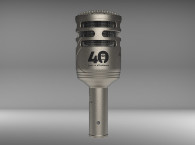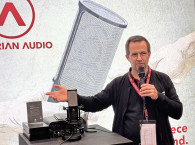
Taking Jurgen Meyer’s renowned book Acoustics and the Performance of Music as their starting point, the pair have used a selection of DPA microphones to produce sound recordings of the most important instruments in the orchestra so that they can aurally highlight the changes made to recorded sound by microphone placement.
“Recording depends on so many things – from the music content, musicians and instruments to the recording venue and the arrangement of the microphones,” Kazuya Nagae says. “When I discovered that no sound material is available as a study aid, I suggested to Thorsten that we create recordings so that people working and studying in the field of recording arts could make comparisons. We hope that our examples can supplement the worthwhile and irreplaceable book by Jurgen Meyer, so that we can not only see the differences but also hear them. This will help sound engineers choose the ‘best’ or most appropriate mic placement for a specific recording situation.”
Nagae and Weigelt recorded their samples at the UdK Concert Hall, which has a mid reverberation time of 1.5 seconds. The instruments they chose include violin, viola, cello, double bass, flute, piccolo, oboe, English horn, clarinet (B flat, A and bass), bassoon, French horn, trumpet, trombone, tuba (B flat and F), snare drum (with and without snare), bass drum and timpani. Every instrument was recorded simultaneously with 14 AB stereo pairs of microphones placed in different horizontal and vertical angles.

“We wanted to record samples in a realistic environment and situation, so we opted for stereo recording in a concert hall because we believe that stereo listening is important for the perception of the color of the recorded instruments,” Thorsten Weigelt explains. “Based on a standard setup, we adjusted the geometry of the system for every instrument to get the most interesting recording points. Also, the distance to the instrument was chosen specifically for every recording, but with the same distance for every pair of microphones (for example violin 248cm, horn 226cm, timpani 265cm). Where possible, we recorded the musician in a standing and sitting position and adjusted the height of the whole microphone setup accordingly. For every instrument, we recorded a few orchestral studies offering different styles and characters, plus one short solo piece and scales.”

A total of 26 DPA d:dicate 4006A microphones were used to capture the sound and they were chosen for their neutral characteristics and excellent sonic qualities. They also used a pair of PZM in front of the musicians.
“We decided to use an AB-mic setup, which is realistic because it is often used as a main mic setting in classical music,” Nagae says. “The most popular mic pattern for this type of work is omnidirectional, which has the advantage of being free from proximity effect and gives a flat response at low frequencies. Even though we recorded in a concert hall and were not too close to the instruments, we wanted to ensure a flat response for the recorded direct sound by using free field equalized capsules. The d:dicate 4006A is famous for its very flat 0°- response if you use the standard silver free-field grid. It was important for a project like this to have very neutral microphones that didn’t color the sound and offered the best high quality specifications in terms of signal to noise ratio, dynamic range and maximum SPL. DPA fitted this brief perfectly. Also having the same type of microphone throughout was another important consideration, otherwise it would be impossible to be sure that the differences you hear are down to microphone position and not some specific microphone characteristic.”

Nagae and Weigelt say they are delighted with the support they received from DPA and its Japanese distributor Hibino, who between them supplemented the UdK’s existing DPA microphone stock to ensure the recordings were able to go ahead. Other companies involved in supporting this project include RME, Audio AG, Synthax Japan Inc, the Kawai Foundation for Sound Technology & Music and Nagoya University of the Arts. As well as its concert hall and control room, the Berlin University of the Arts also provided musicians and recording students on its Tonmeister course.
“Anyone listening to these recordings will need to bear in mind that while they have general validity, they are also specific to the recording situation in the UdK Concert Hall, the instrument used and the musician playing the instrument,” Weigelt adds. “An attentive listener will take good hints from them but will need to explore his/her own specific recording situation. The listener will also clearly hear very different direct-to-reverberant ratios depending of the position of microphone pairs, which are frequency dependent. This has to do with the frequency dependent directivity factors of the instruments. More interesting angles would have been conceivably, but practically not possible. Also, don’t forget that for instruments with more complex radiation patterns, the captured sound changes with the distance between microphone and instrument in more aspects than only direct-to-reverberant ratio. This is clearly shown by Jurgen Meyer, but that would be the next story – if we can find 100 microphones of the same type!”

With editing now complete, Nagae and Weigelt have made the results of their experiments available online so that everyone can benefit from the recordings. To listen to the samples and fully explore this unique project, click here.
www.dpamicrophones.com






